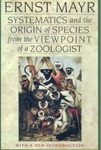![The Fruit, the Tree, and the Serpent The Fruit, the Tree, and the Serpent]()
Click to have a closer look
About this book
Contents
Customer reviews
Biography
Related titles
About this book
From the temptation of Eve to the venomous murder of the mighty Thor, the serpent appears throughout time and cultures as a figure of mischief and misery. The worldwide prominence of snakes in religion, myth, and folklore underscores our deep connection to the serpent - but why, when so few of us have firsthand experience? The surprising answer, this book suggests, lies in the singular impact of snakes on primate evolution. Predation pressure from snakes, Lynne Isbell tells us, is ultimately responsible for the superior vision and large brains of primates - and for a critical aspect of human evolution.
Drawing on extensive research, Isbell further speculates how snakes could have influenced the development of a distinctively human behavior: our ability to point for the purpose of directing attention. A social activity (no one points when alone) dependent on fast and accurate localization, pointing would have reduced deadly snake bites among our hominin ancestors. It might have also figured in later human behavior: snakes, this book eloquently argues, may well have given bipedal hominins, already equipped with a nonhuman primate communication system, the evolutionary nudge to point to communicate for social good, a critical step toward the evolution of language, and all that followed.
Contents
* Preface * Introduction * Primate Biogeography * Why Did Primates Evolve? * Primate Vision * Origins of Modern Predators * Vision and Fear * Venomous Snakes and Anthropoid Primates * Why Only Primates? * Testing the Snake Detection Theory * Epilogue: Implications for Humans * Appendix * References * Acknowledgments * Index
Customer Reviews
Biography
Lynne A. Isbell is Professor of Anthropology and Animal Behavior, University of California, Davis.
By: Lynne A Isbell
207 pages, b/w illustrations, tables
In The Fruit, the Tree, and the Serpent, Lynne A. Isbell weaves together facts from anthropology, neuroscience, palaeontology, and psychology to explain that our emotional connection to snakes has a long evolutionary history. This history, Isbell says, is responsible not only for snake fear--the serpent in the garden of Eden, the world-creating Rainbow Serpent of Australian aboriginal myth and B-grade cinema fare--but also for our keen primate vision and perhaps even our facility with language...The book is always rewarding...Her snake tales from long years in the bush are informative and often funny. Isbell writes solid evolutionary science and also takes calculated risks. -- Barbara J. King Times Literary Supplement 20091009 The anthropologist and animal behaviorist Lynne Isbell elegantly posits here that the human facility with language evolved largely thanks to snakes. Coolly testing hypotheses and assessing evidence across an impressive range of disciplines--neuroscience, primate behavior, paleogeography, molecular biology, and genetics--she argues that our distant primate relatives developed their exceptional ability to see and identify "objects that were close by and in front of them" in order to detect and avoid what was almost certainly their most dangerous predator--the snake...And so, Isbell avers, Genesis has it right: the snake made us human. This groundbreaking, intellectually scintillating work is nonfiction at its absolute best. Isbell ranges widely, unpacks her evidence meticulously, synthesizes disparate and difficult material economically, addresses counterarguments scrupulously, and writes cleanly, often gracefully, and occasionally even playfully. The Atlantic 20100401



































